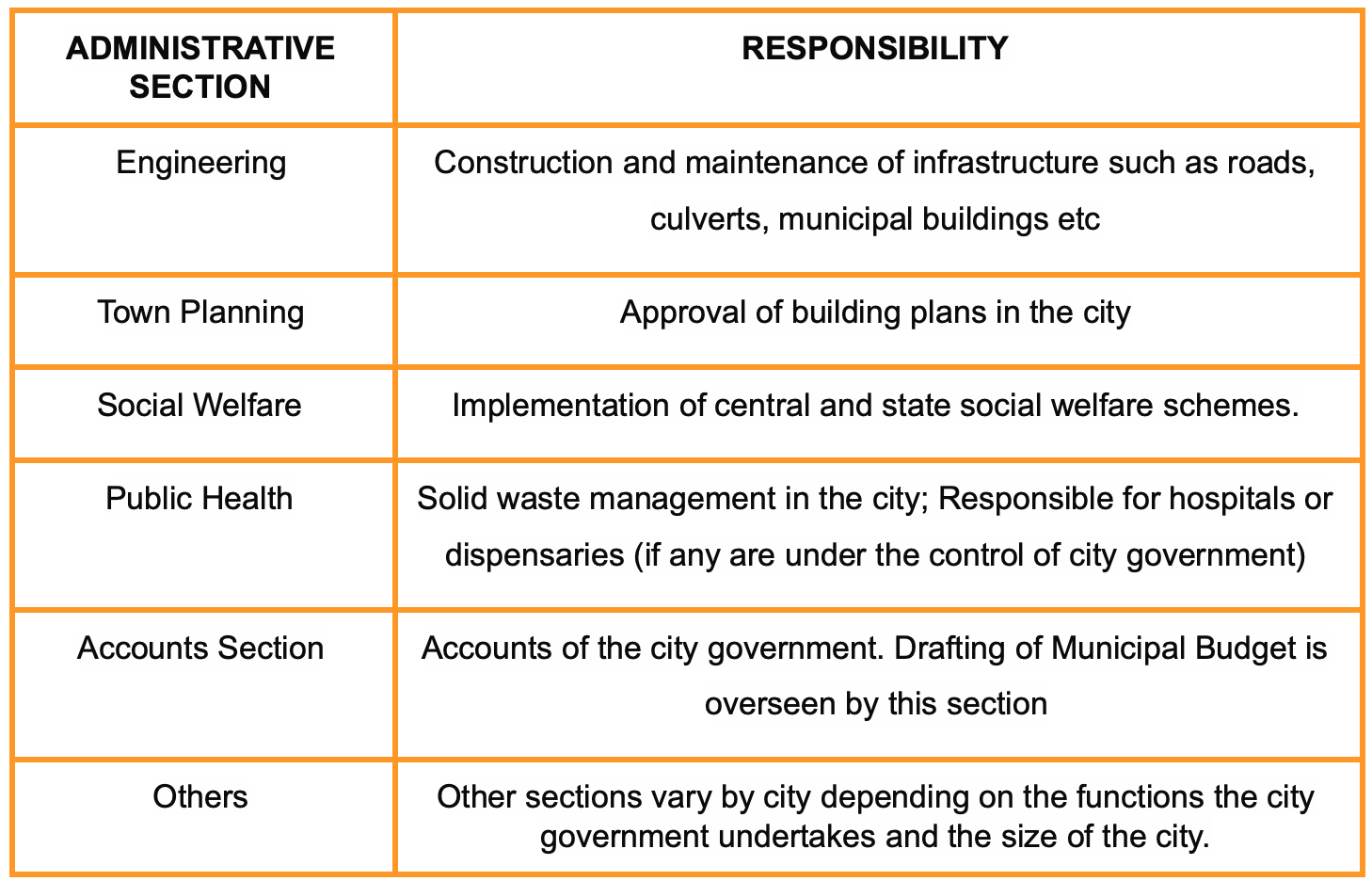What is a City Government?
/City governments are more commonly known as Urban Local Bodies, Nagar nigams, or municipalities. The city government is composed of various actors who occupy various roles in the government and undertake different functions. City government actors can be divided into two broad groups - administrative and elected. The role of administrative staff has significant variance within itself but differs from the elected officials primarily because they are not elected and are not put in office through citizens’ votes. We look at some of the key actors and institutions at city governments in the following section.
Elected Officials
Elected Officials are the councillors that the people in a city elect. They include the mayor and deputy mayor as well. In some states, the mayor is elected directly by the people, whereas in other states the elected councillors elect the mayor from amongst themselves.
Elected members can form various committees within the city governments, depending on the provisions of the respective municipal acts. These can include standing committees, subject committees, executive committees etc. Apart from this, some states also have the Mayor-in-Council (MIC) system where a cabinet-like committee of a few councillors is formed with each councillor responsible for one or two subjects. In the states which follow this system, it is the Mayor who chooses the members of the MIC.
The general body of the councillors or elected representatives, sometimes known as the Council or the House, is generally the most powerful body in a city government. Its approval is needed for various things such as the passing of the municipal budget and decisions on development works in the wards.
Administrative Sections
Just like in central and state governments, city governments also have various administrative sections or departments to look after particular functions. These administrative sections are headed by department heads who are mostly deputed from state governments. The sections may be known by different names in different cities. Some of the most common sections are:
Administrative Staff
Officers occupy various roles at the city governments and come from various backgrounds. In many states, heads of key departments such as Health, Engineering among others, are deputed from state departments while in others they are part of core municipal staff. In the former case, their services can be transferred to other cities within the state while in the latter scenario, the staff serves the same city government.
For example, a municipal engineer in a city who is deputed from the Public Health Engineering Department of the State can also be transferred to another city as a city engineer or other departments within the state including rural areas. One of the biggest reasons for a non-uniform system of appointing municipal staff is the lack of a dedicated municipal cadre system from where to draw employees for city governments.
The head of the administrative section of the city government is the Municipal Commissioner. In case of bigger city governments, Municipal Commissioners generally belong to the Indian Administrative Services while in various other city governments, the Commissioners come from the state civil services. In smaller city governments, they are called Chief Executive Officer (CEO) or Chief Officer (CO) and not Commissioner. In Kerala, they are designated as Secretary.
Other staff in the administrative wing includes that of the middle and lower tiers of technical, administrative and field staff. These include accounts officers, junior engineers, health or sanitary inspectors, electricians/linemen, clerks, peons among others. There are field based staff as well, such as health inspectors and tax collectors. Together they form the bulk of the city government administrative staff and can be hired on both temporary and permanent basis. City governments generally do not have the liberty to hire staff at will, especially on a permanent basis.
This piece is part of the Governance Series of the Nagrikal. Nagrikal is a platform for citizens from small cities to share their experiences so that they be channeled into policies.













